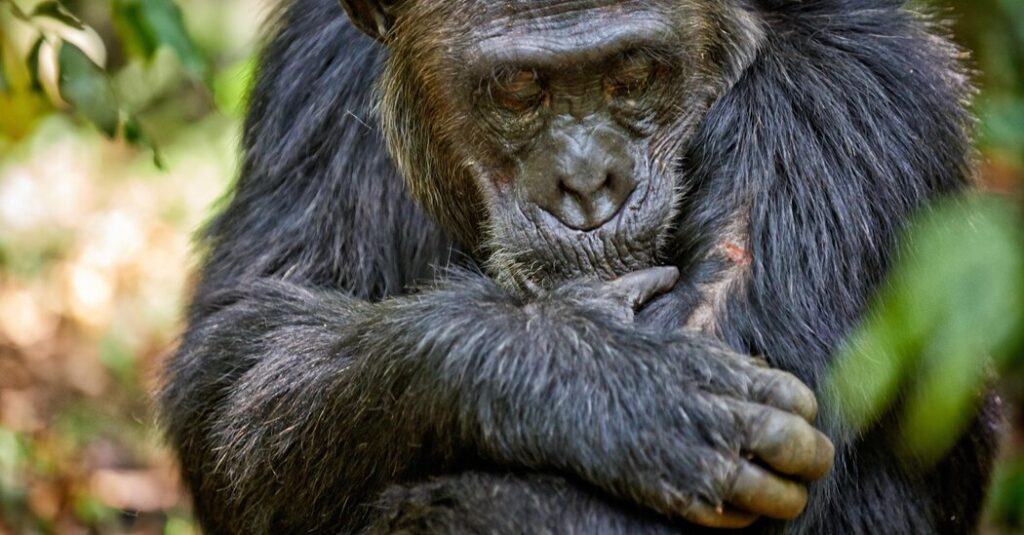While observing wild baboons in Kenya, Akiko Matsumoto-Oda, an evolutionary biologist and primatologist at Japan’s University of the Ryukyus, witnessed intense interactions among these monkeys, particularly among the males.
“I was amazed at how often they got injured,” she remarked, “and even more so at how quickly they healed — even from what looked like serious injuries.”
In comparison to her own experiences with minor injuries, the baboons’ healing abilities appeared almost superhuman.
In a recent study released in Proceedings of the Royal Society B, Dr. Matsumoto-Oda and her team examined the healing rates among humans, chimpanzees, monkeys, and mice. The findings revealed that humans took over twice as long to heal as any of the other mammals studied. This slower healing might stem from an evolutionary compromise made in the past when we lost our fur for hairless, sweat-producing skin that helps us regulate body temperature.
The researchers aimed to study healing in a more controlled and less violent manner than observing wild baboons.
For human healing, they enlisted 24 patients undergoing skin tumor removal at the University of the Ryukyus Hospital. For data on chimpanzees, which are closely related to us, researchers monitored five captive chimps at the Kumamoto Sanctuary at the Kyoto University Wildlife Research Center, home to animals previously used in pharmaceutical studies. The injuries of these chimps arose from interactions similar to those of wild baboons.
Other primates involved in the study, all located at the Kenya Institute of Primate Research, included olive baboons, Sykes’ monkeys, and vervet monkeys. The researchers sedated the monkeys, inflicted surgical wounds, and then observed their recovery. Dr. Matsumoto-Oda, a field researcher, emphasized the importance of minimizing invasive studies, mentioning that bite wounds on wild baboons often resemble the study’s surgical wounds, although they are generally deeper.
Finally, to compare humans and primates with more distantly related mammals, researchers also anesthetized and surgically wounded mice and rats.
Dr. Matsumoto-Oda expected to find humans healing more slowly than the other animals. The 24 human participants healed at an average rate of about a quarter of a millimeter per day.
What surprised Dr. Matsumoto-Oda was the uniformity in the healing rates among the animal subjects, including the chimpanzees. There were no noteworthy differences in the quick skin regrowth among various primates, which averaged about 0.62 millimeters of new skin daily, nor between primates and rodents. Humans stood out as the slowest healers.
Elaine Fuchs, a stem cell biologist at Rockefeller University who studies skin growth and repair and was not involved in the study, found these results to be predictable. This is largely because skin healing is linked to hair.
Each hair derives from a follicle, which also contains stem cells. Typically, these stem cells produce more hair, but they can also regenerate skin when necessary. “When the epidermis suffers a wound, as with most scratches and scrapes, it’s primarily the hair-follicle stem cells that handle the repair,” Dr. Fuchs explained.
Furry animals are covered in hair follicles that enable quick wound closure, as seen in mice or monkeys. In contrast, “human skin features very small hair follicles,” Dr. Fuchs mentioned. Our ancestors lost many of these follicles, replacing them with sweat glands. Though sweat glands also contain stem cells, they are significantly less effective at wound healing, according to Dr. Fuchs.
Why did we choose to evolve in this way, losing much of our hair and its protective benefits? Our watery, salty sweat is produced by eccrine glands, which most furry mammals possess only in select body areas, mainly on the soles of their feet. Conversely, human ancestors embraced sweating, resulting in modern humans having millions of sweat glands spread throughout their bodies, approximately ten times denser than those of chimpanzees.
“We adapted to cool off by sweating significantly,” remarked Daniel Lieberman, an evolutionary biologist at Harvard University. Our numerous sweat glands and lack of fur allowed our ancestors to engage in physical activities in hot climates, according to Dr. Lieberman, and kept our larger brains cool.
The advantages of trading fur for sweat likely outweighed the disadvantages. Dr. Matsumoto-Oda and her co-authors suggest that social support among early humans might have allowed injured individuals to survive, despite our slower healing processes. (Alternatively, they could have had methods for treating wounds, similar to those observed in orangutans and chimps.)
“The downside is that healing is slower,” Dr. Fuchs stated, “but humans also received evolutionary benefits from losing hair.”
“They can always wear clothing if necessary,” she added.


